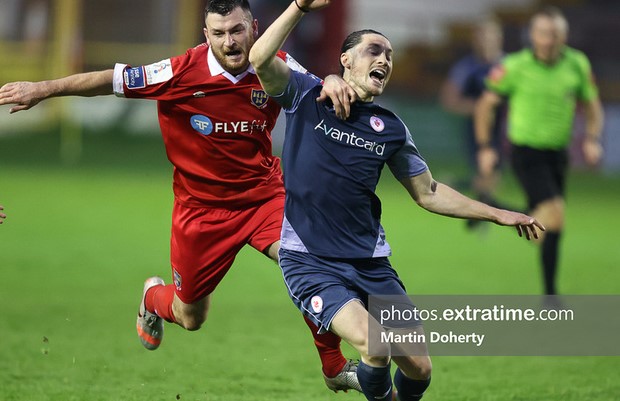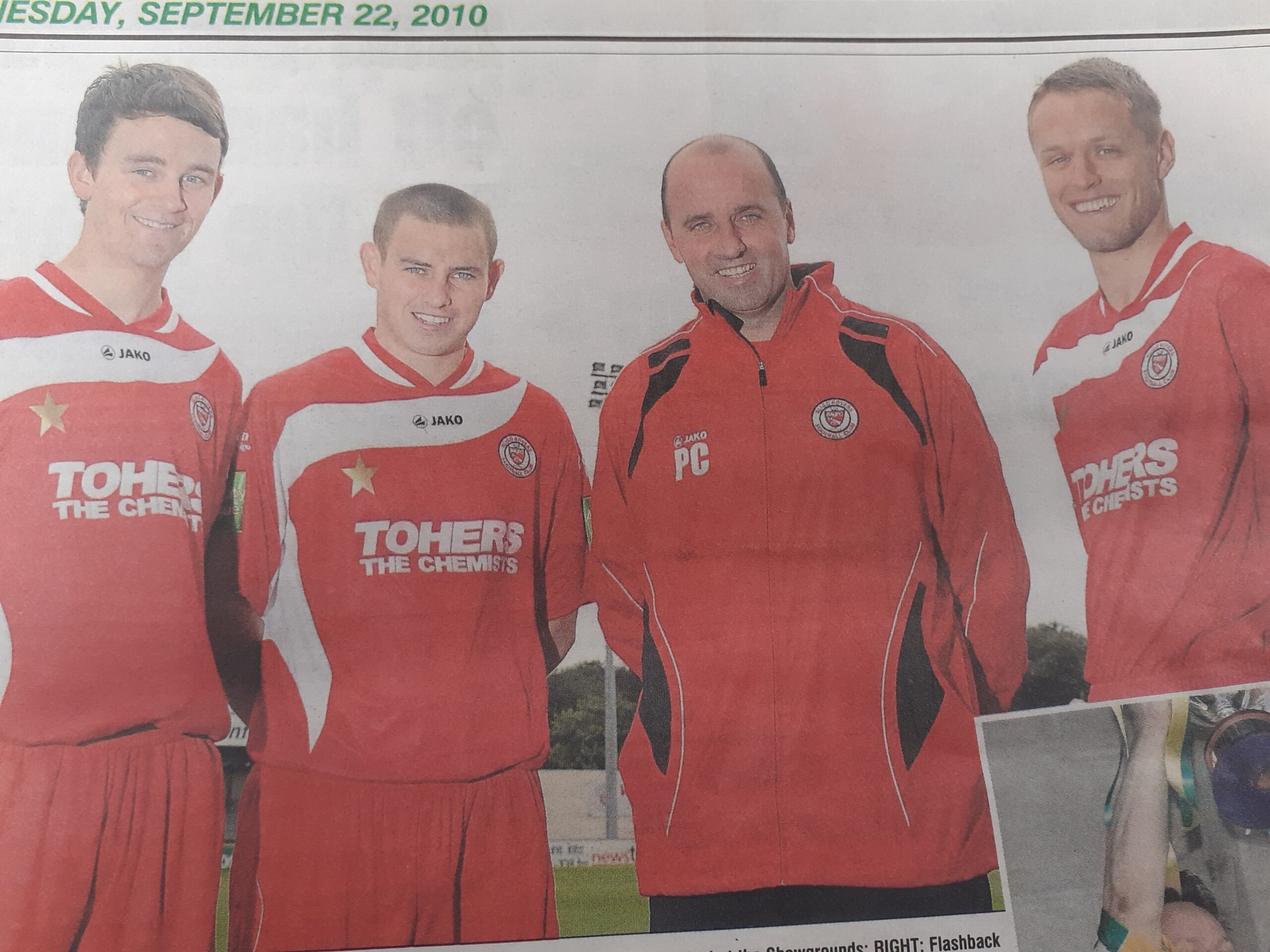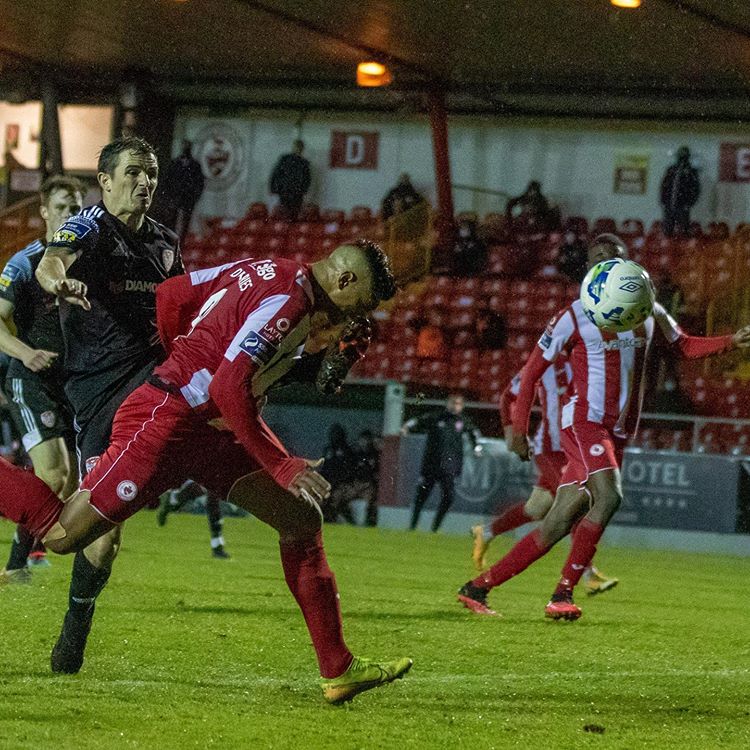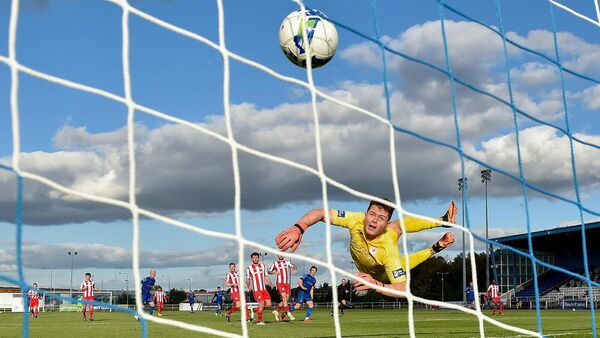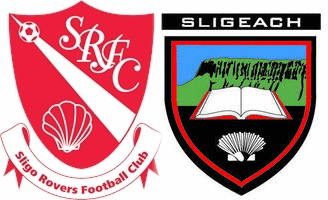
There was a lively and entertaining bit of banter on social media recently regarding players who have represented Sligo Rovers in the League of Ireland and the Sligo GAA team at senior level in National League and Championship football.
In these days of ecumenical sporting brother and sisterhood, it isn’t at all uncommon for talented players to participate in both codes but there was a time when a crossover between the two games was seen as an act of unforgiveable treason.
Indeed, it was actually outlawed in the rules of the GAA for decades, so strictly enforced that anybody engaged in soccer, even at a peripheral level, was barred from attending a Gaelic match, never mind playing the national game.
Thankfully, a more liberal attitude within the GAA brought some sweeping changes to age-old divisions and the removal of the infamous ban, Rule 27, in 1971 paved the way for soccer players to participate in Gaelic Games if they so wished.
And it was two Sligo Rovers players who were the first in the country to br the mould.
David Pugh and the late Gerry Mitchell earned an indelible place in Irish sporting folklore when they became the first established League of Ireland players to play senior inter-county football. It was a real breakthrough moment in our sporting and social mindset and was probably never fully recognised as the enormous shift in our national culture that it was.
Given all that had gone before in terms of the hostility and historical differences between the two games, it was a truly groundbreaking development, confirming the all-embracing power of sport to unite rather than divide.
The inclusion of Pugh and Mitchell in Sligo’s GAA squad for the 1971 Connacht Championship was laced with irony, however, as Sligo had been one of only two counties (Antrim was the other) which opposed the removal of the ban.
Once the controversial Rule 27 was consigned to the scrapheap, Sligo embraced the new regulations enthusiastically and the recruitment of the Rovers players proved a shrewd move as Pugh and Mitchell
both played vital roles in a memorable Championship campaign. (Tony Fagan was also included in the GAA panel that Summer but didn’t get a starting place on the team)
Pugh and Mitchell both impressed in Sligo’s opening Championship game against Roscommon. It was, incidentally, the first Championship game played at the recently opened Hyde Park. As was usually the case, Sligo started as underdogs but defied the odds to fashion a thoroughly deserved 0-10 to 1-5 win.
The fact that two soccer players engaged in a Gaelic football match at a ground named in honour of Ireland’s first President, Douglas Hyde, was highly appropriate too.
Shortly after his inauguration in 1938, President Hyde attended a soccer international between Ireland and Poland at Dalymount Park and as a consequence was swiftly removed from his position as Patron of the GAA, a role he had held since 1902.
The 1971 Connacht final between Sligo and Galway at McHale Park turned out to be a gripping encounter with a last minute point from a free by the legendary Mickey Kearins earning the Yeats County a thrilling draw. The replay at the same venue was another cracking game but ended in heartbreak for Sligo as Galway shaded it by a single point, 1-17 to 3-10. Pugh and Mitchell featured prominently in both games.
The soccer stars also featured in Sligo’s Championship season in 1972, with Pugh contributing 2-3 and Mitchell a goal in a facile win over Leitrim in the opening round at Markievicz Park. However, the Yeats County’s hopes of glory were dashed by Mayo in the semi-final, although it needed a replay to decide the outcome.
Incidentally, the goalkeeper on that great Sligo team was Tommy Cummins, who would later go on to play for Rovers in the League of Ireland, and whose family have been loyal and selfless servants to the Bit O Red for generations.
If their contribution to Sligo’s GAA cause was noteworthy in a historical context, Pugh and Mitchell were unquestionably two of Sligo Rovers greatest servants.
Both played on the iconic Rovers team which reached the FAI Cup final in 1970 – the club’s first final in 30 years – and both served in managerial roles at different periods in the 1970s and 1980s
Gerry Mitchell was Rovers manager when the Bit O Red played Shamrock Rovers in the semi-final of the FAI Cup on April 12th 1987. It was the last ever game at Miltown. The game, which was the second leg of a two-legged tie, finished 1-1 with Tony O’Kelly on target for the Bit O Red. As the first game at the Showgrounds had been a scoreless draw, a third game was required. It took place at the Showgrounds on April 15th and ended in a 1-0 win for Shams. That match marked Tony Fagan’s last appearance for Rovers.
Given that next year will mark the 50th anniversary of the removal of the contentious ban from the GAA rule book and that it was two proud Sligomen who were the first in the country to cross the threshold from soccer into senior Gaelic football, wouldn’t it be nice if their groundbreaking move was officially honoured in some way by the two sporting bodies.?
By Leo Gray
There was a lively and entertaining bit of banter on social media recently regarding players who have represented Sligo Rovers in the League of Ireland and the Sligo GAA team at senior level in National League and Championship football.
In these days of ecumenical sporting brother and sisterhood, it isn’t at all uncommon for talented players to participate in both codes but there was a time when a crossover between the two games was seen as an act of unforgiveable treason.
Indeed, it was actually outlawed in the rules of the GAA for decades, so strictly enforced that anybody engaged in soccer, even at a peripheral level, was barred from attending a Gaelic match, never mind playing the national game.
Thankfully, a more liberal attitude within the GAA brought some sweeping changes to age-old divisions and the removal of the infamous ban, Rule 27, in 1971 paved the way for soccer players to participate in Gaelic Games if they so wished.
And it was two Sligo Rovers players who were the first in the country to br the mould.
David Pugh and the late Gerry Mitchell earned an indelible place in Irish sporting folklore when they became the first established League of Ireland players to play senior inter-county football. It was a real breakthrough moment in our sporting and social mindset and was probably never fully recognised as the enormous shift in our national culture that it was.
Given all that had gone before in terms of the hostility and historical differences between the two games, it was a truly groundbreaking development, confirming the all-embracing power of sport to unite rather than divide.
The inclusion of Pugh and Mitchell in Sligo’s GAA squad for the 1971 Connacht Championship was laced with irony, however, as Sligo had been one of only two counties (Antrim was the other) which opposed the removal of the ban.
Once the controversial Rule 27 was consigned to the scrapheap, Sligo embraced the new regulations enthusiastically and the recruitment of the Rovers players proved a shrewd move as Pugh and Mitchell
both played vital roles in a memorable Championship campaign. (Tony Fagan was also included in the GAA panel that Summer but didn’t get a starting place on the team)
Pugh and Mitchell both impressed in Sligo’s opening Championship game against Roscommon. It was, incidentally, the first Championship game played at the recently opened Hyde Park. As was usually the case, Sligo started as underdogs but defied the odds to fashion a thoroughly deserved 0-10 to 1-5 win.
The fact that two soccer players engaged in a Gaelic football match at a ground named in honour of Ireland’s first President, Douglas Hyde, was highly appropriate too.
Shortly after his inauguration in 1938, President Hyde attended a soccer international between Ireland and Poland at Dalymount Park and as a consequence was swiftly removed from his position as Patron of the GAA, a role he had held since 1902.
The 1971 Connacht final between Sligo and Galway at McHale Park turned out to be a gripping encounter with a last minute point from a free by the legendary Mickey Kearins earning the Yeats County a thrilling draw. The replay at the same venue was another cracking game but ended in heartbreak for Sligo as Galway shaded it by a single point, 1-17 to 3-10. Pugh and Mitchell featured prominently in both games.
The soccer stars also featured in Sligo’s Championship season in 1972, with Pugh contributing 2-3 and Mitchell a goal in a facile win over Leitrim in the opening round at Markievicz Park. However, the Yeats County’s hopes of glory were dashed by Mayo in the semi-final, although it needed a replay to decide the outcome.
Incidentally, the goalkeeper on that great Sligo team was Tommy Cummins, who would later go on to play for Rovers in the League of Ireland, and whose family have been loyal and selfless servants to the Bit O Red for generations.
If their contribution to Sligo’s GAA cause was noteworthy in a historical context, Pugh and Mitchell were unquestionably two of Sligo Rovers greatest servants.
Both played on the iconic Rovers team which reached the FAI Cup final in 1970 – the club’s first final in 30 years – and both served in managerial roles at different periods in the 1970s and 1980s
Gerry Mitchell was Rovers manager when the Bit O Red played Shamrock Rovers in the semi-final of the FAI Cup on April 12th 1987. It was the last ever game at Miltown. The game, which was the second leg of a two-legged tie, finished 1-1 with Tony O’Kelly on target for the Bit O Red. As the first game at the Showgrounds had been a scoreless draw, a third game was required. It took place at the Showgrounds on April 15th and ended in a 1-0 win for Shams. That match marked Tony Fagan’s last appearance for Rovers.
Given that next year will mark the 50th anniversary of the removal of the contentious ban from the GAA rule book and that it was two proud Sligomen who were the first in the country to cross the threshold from soccer into senior Gaelic football, wouldn’t it be nice if their groundbreaking move was officially honoured in some way by the two sporting bodies.?

